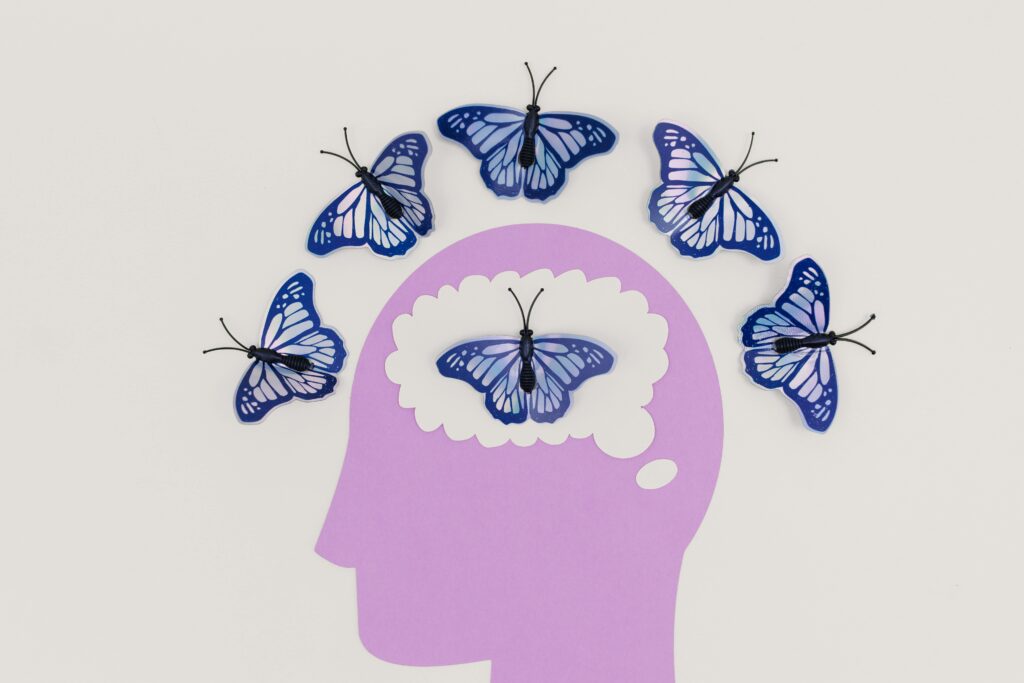This post is also available in Dutch.
Think of an apple. What do you “see” in your mind’s “eye”? A vivid image of a crisp red apple, sitting in your palm? Or maybe it’s more like an emoji of an apple. Perhaps you can only imagine the rough shape? Or do you think of the word “apple” with no mental pictures at all? What you just experienced can reveal how much of a visual thinker you are.
What does it mean to “think visually”?
Visual thinking means processing thoughts through mental images. Unlike reading words or hearing sounds, visual thinking involves picturing concepts in your mind, using a mental image to process ideas and solve problems. This type of mental imagery should not be confused with synesthesia. Visual thinkers simply prefer mental images as their primary way of thinking about the world, whereas synesthetes experience involuntary sensory connections, for example between letters and colors.
Most people use a combination of visual/spatial and verbal thinking. Others solely rely on visual thinking, but only a small percentage see mental images as vividly as real-world objects, also called hyperphantasia. On the other side of the visual thinking spectrum is aphantasia, which is “image-free thinking”. Aphantasiacs often think in abstract concepts or words. The imagination spectrum ranges from aphantasia (no images) to hyperphantasia (photo-like) and everything in between and can also extend to other senses, like sound, taste, touch, or smell.

How does the brain create mental images?
The brain’s ability to generate mental pictures largely relies on the same regions that are active when we see something with our eyes. This involves the interplay of lower-level sensory areas and higher-level control regions. An MEG study reports that visual thinkers engage visual regions more intensely during mental imagery whereas verbal thinkers activate frontal language regions more. Key candidates for changes in hyperphantasia and aphantasia are the connections between the occipital lobe (which processes visual information) and the frontal lobe (which deals with reasoning and problem-solving) that might control the how vivid and clear a mental image is.
Are you a visual thinker?
Both vivid internal visualizations and reliance on abstract concepts have their own advantages. A survey suggests that people who primarily think visually often prefer “creative” professions, while non-visual thinking, like in aphantasia, has been linked to fields like science or maths.
Curious about your own mental imagery style? Take a quiz or start by asking yourself these questions:
- Close your eyes and imagine a sunset over the ocean. How clear is the image? Can you see details like the moving waves and colors of the sky and the water, or is it more abstract?
- When recalling a friend’s face, do you see a detailed picture, or do you recognize them based on conceptual knowledge (for example, they wear glasses and have blue eyes and brown hair)?
- If you think of your way home. Can you mentally “see” the landmarks, or do you recall directions in words?
Whether you think in vivid pictures, words or a mix of the two, the way your brain processes information shapes how you interact with the world. Ask your friends and family about how they think about the world, the differences in our internal experiences can be quite surprising!
Credits
Author: Helena Olraun
Buddy: Charlotte Sachs
Editor: Xuanwei Li
Translation: Wieger Scheurer
Redactie vertaling: Natalie Nielsen
Featured image by Tara Winstead on pexel.com
